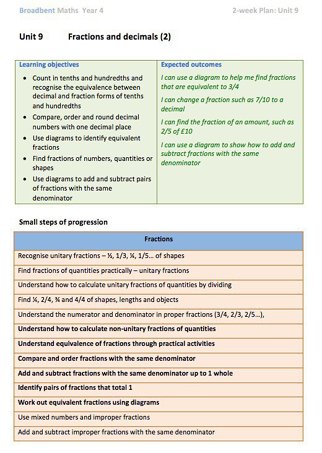Learning Objectives
The learning objectives are the specific curriculum goals for a unit of work: what the pupils will know, understand or be able to do by the end of the unit. They outline how the National Curriculum programmes of study have been broken down and then sequenced to make sure there is coverage, progression and continuity.
They can be relatively broad in scope and some are very similar when repeated again later in the year, with the detail of the expected outcomes (or success criteria) showing the specific change in emphasis. The objectives are for you to use as a reference so that you can have a clear unit focus and so that you can identify more specific lesson objectives when planning a teaching sequence of lessons.
It is good practice to share these objectives with the children at the beginning of each teaching sequence in child-friendly language so that they are clear on the focus of each activity and what they are expected to learn. Alternatively, expected outcomes can be the child-friendly statements to share with the children.
Expected Outcomes
The expected outcomes statements are formed out of the Learning Objectives, giving a clear idea of the evidence you will be looking for to identify whether your pupils have met the learning objectives. They are, in effect, what the successful learning will 'look like' once the Learning Objectives have been met.
They are written in child-friendly terms, often as 'I can...' statements, as the children themselves should be part of the process of assessing whether they have made progress and been successful in meeting the objectives. They also identify specific aspects to focus on from the objectives.
For example, look at this objective for a Year 4 Shape and Symmetry unit:
Small steps of progression
So, what about the small steps of progression? These are closely linked to the objectives, but help you to fine-tune your teaching, breaking down the objectives into separate steps.
These steps show the development of a particular strand of maths, giving you a clear ‘journey’ of the early concepts or skills a child will experience, through to the more advanced expectations by the end of Y6. To use them, find out where the majority of your class are pitched (expectations are shown in bold on the template for Broadbent Maths users) and then look at the previous steps and the next steps to gauge the teaching focus. Children are not expected to cover all the small steps in a unit, it simply identifies the steps they are likely to take, which could be just one or two over a teaching sequence. Also, maths learning is not linear – there are lots of inter-connections, so it may be that there will be steps they show good understanding of, with some gaps evident in their previous steps.
These small steps of progression are particularly effective if shared with the children as part of their formative assessment. They can then be ‘owners of their own learning’ as Dylan Wiliam put it – knowing the next steps to aim for or to identify any gaps in their knowledge and understanding. Schools have successfully used them as a reference sheet of steps for the pupils to have in their books at the start of a new unit, using smiley faces or a scale to record progress.
I hope this helps you pick through the differences and links between each of these. There is no doubt that identifying the learning objectives, developing the expected outcomes and understanding the progression inherent in each maths topic is an essential part of your planning and an important feature of your own ‘deep’ subject knowledge.



